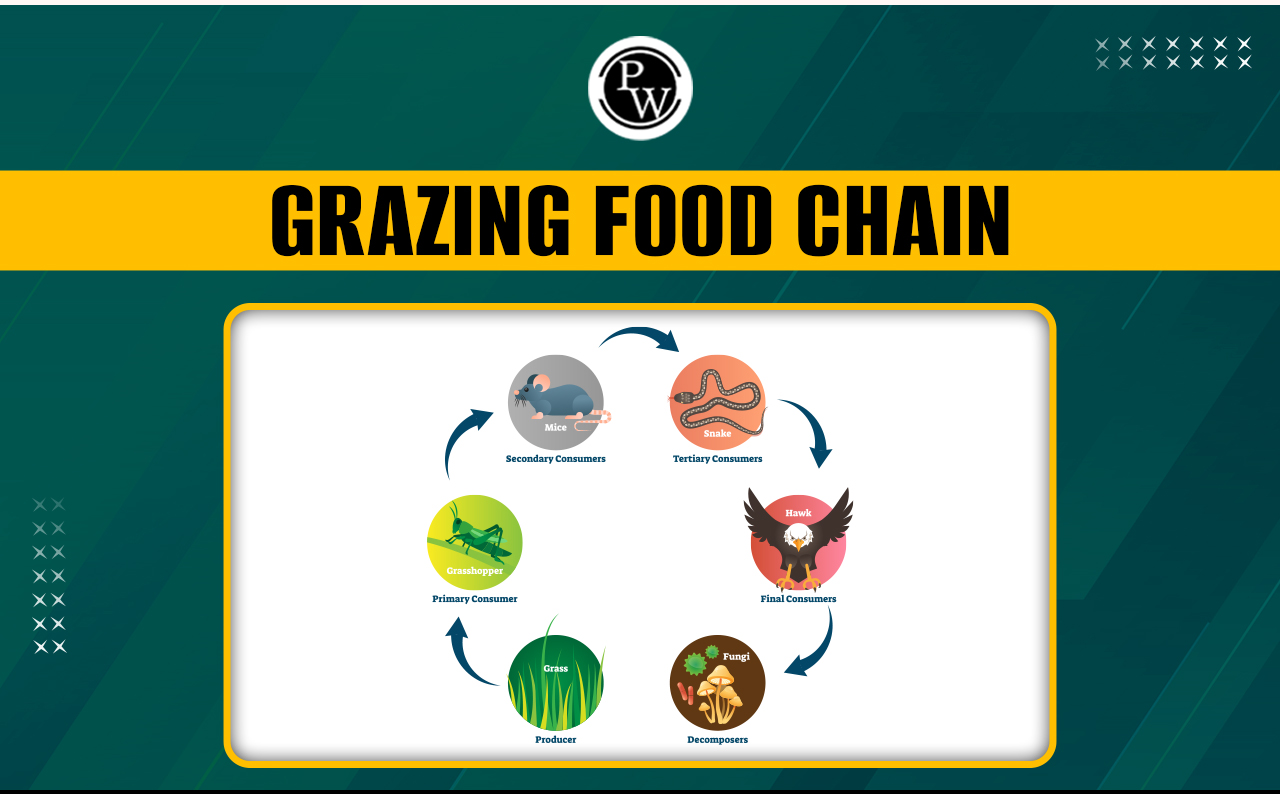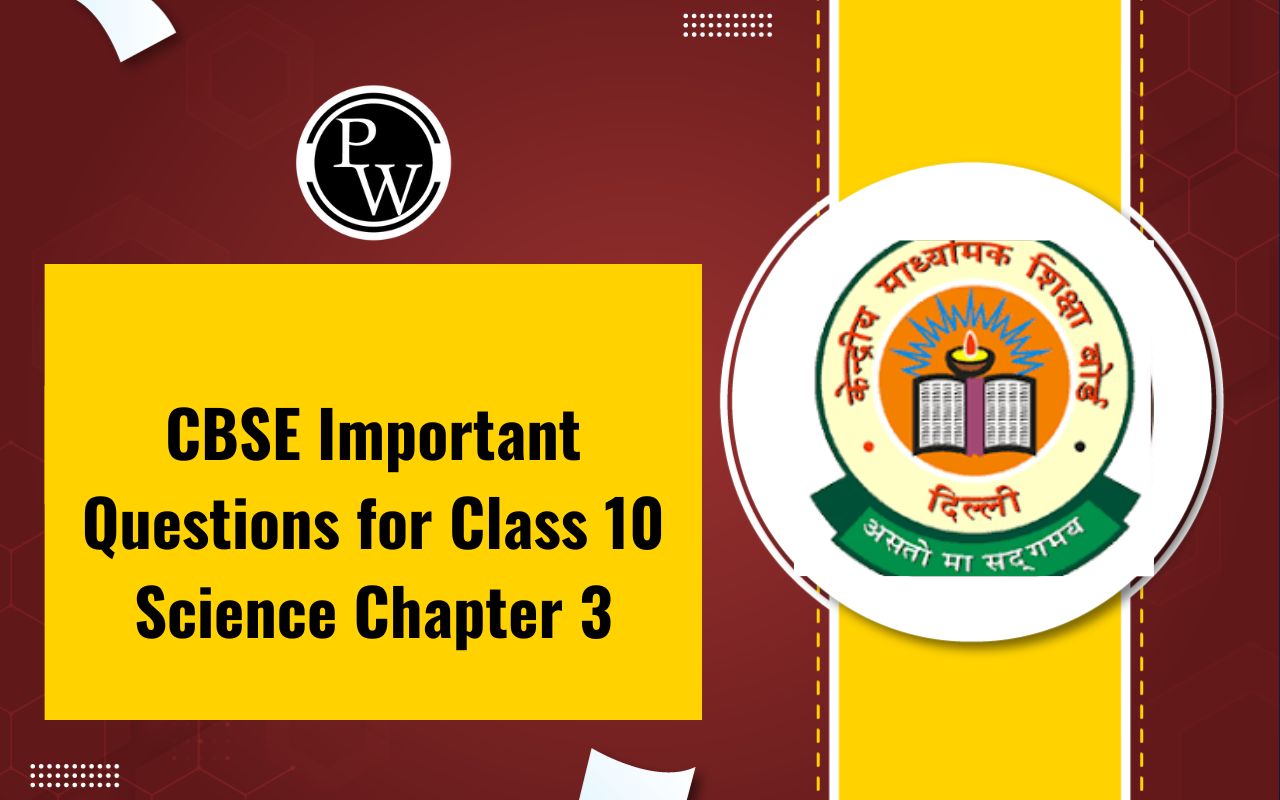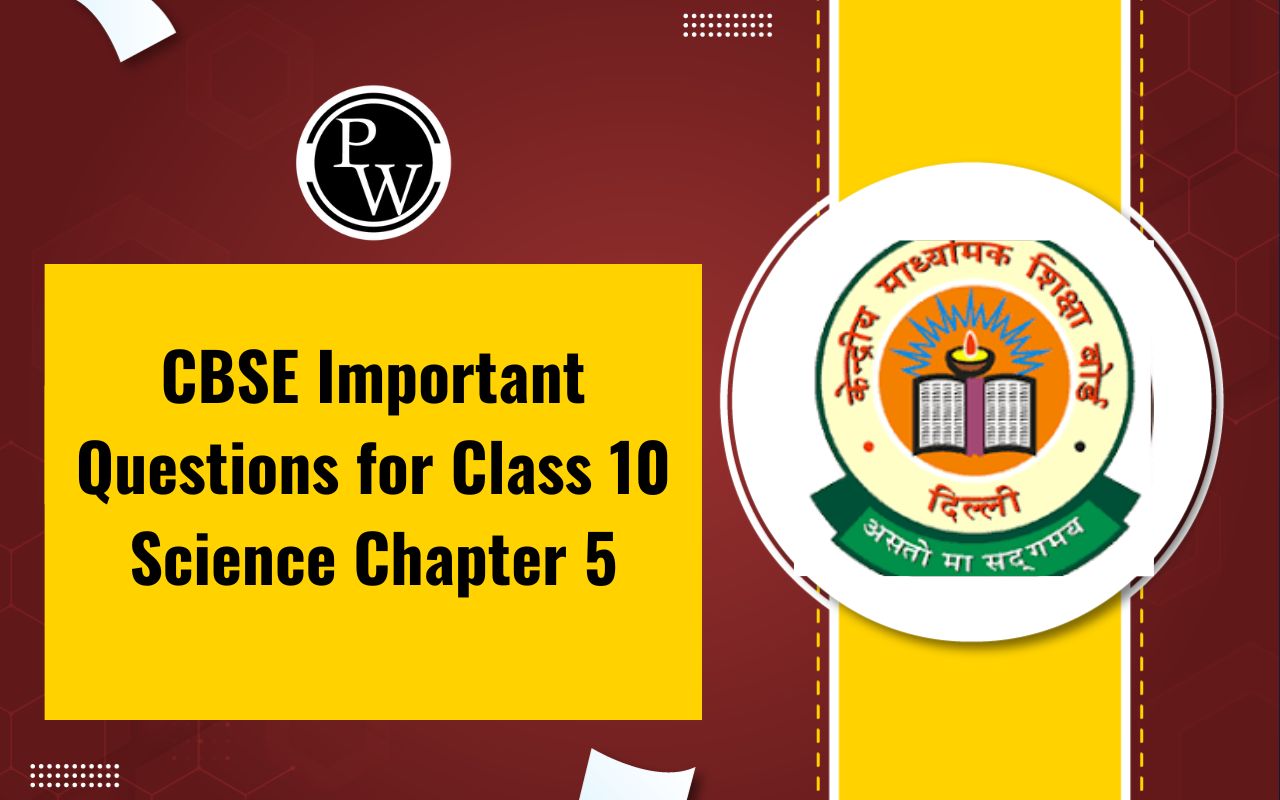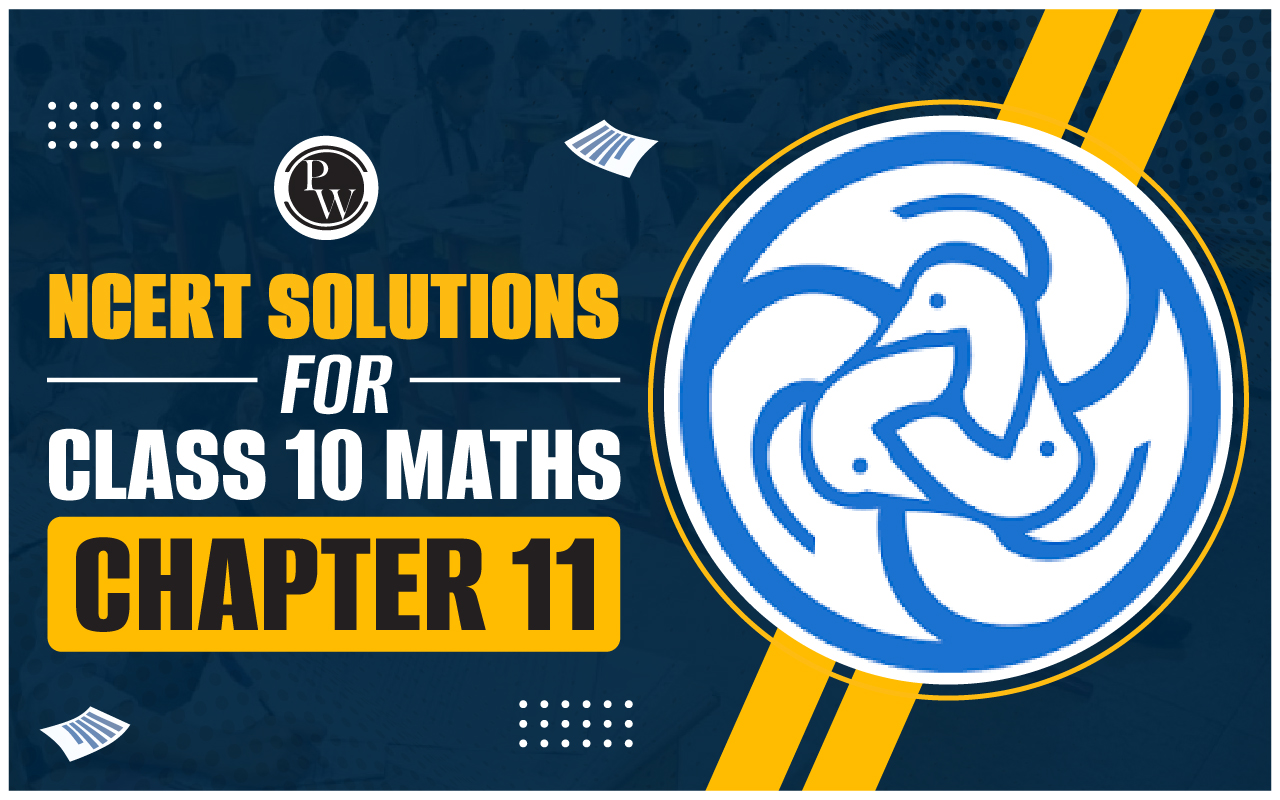

Grazing Food Chain: There is a type of food chain called the grazing food chain, which starts with green, living plants and finishes with herbivorous grazers. The amount of solar radiation has an impact on it. Fish sequences or a grasses-rabbit-fox food chain are two examples of the grazing food chain.
Grazing Food Chain
Diverse organisms coexist in an ecosystem where they constantly exchange nutrients and energy with one another. Food chains are created when one organism is consumed by another, allowing the transfer of nutrients and energy. A food web is created by energy transfer efficiency limits All living things need energy to maintain basic functions like breathing and movement. Productivity, the rate at which living things add energy in the form of biomass, is used to describe energy fixation. The overall rate of energy fixation is known as gross productivity. There are interactions of numerous food chains in a single ecosystem. A food chain provides a clear picture of the interactions and linkages among the various creatures that make up an ecosystem. Energy from the sun is used by grazing food chains. Green plants that use photosynthesis rely on solar energy to convert atmospheric carbon dioxide into glucose, a physiologically usable form. Herbivores consume the producers, and then carnivores eat the herbivores. For the plants to reuse the nutrients, the decomposers transform the dead and decaying stuff into usable nutrients in the soil. As a result, energy moves in a single direction.Glyolysis and Glycolytic Pathway
Characteristics of the Grazing Food Chain
- The grazing food chain depends heavily on the sun, a crucial source of energy in this food chain.
- Some factors that impact this food chain include plant oxidation, viral invasion, and plant deterioration brought on by increased water flow.
- This food chain helps the soil fix inorganic nitrogen and provides energy to the ecosystem.
- This food chain involves every macroscopic organism or every species that can be seen with the unaided eye.
Types of the grazing food chain
The grazing food chain again has two sorts, despite solar energy being the main energy source.-
Predator food chain
- Green plants serve as producers, which are then consumed by herbivores, eaten by predators, and so forth.
- From microscopic organisms to giant organisms, materials, and energy flow.
-
Parasitic food chain
- In a parasitic food chain, huge herbivores inhabited by small parasites devour the green plants. Otherwise, tiny parasitic insects that harbour microscopic hyperparasites like bacteria and fungi like to infect the green plants themselves.
- From huge organisms to microscopic organisms, energy and matter are transferred.
Genetically Modified Organisms Ethical Issues
Grazing versus detrital food webs
In an ecosystem, not all food chains begin with producers. Organic stuff that is dead and decaying is the basis of detritus food chains. Detritivores are organisms that feed on rotting and dead stuff, which feeds small predators that feed on larger predators. The detritus food chain is smaller than a grazing food chain, with energy flowing from small detritivorous species to larger predators and even huge predators. Decomposing materials is the main energy source. The detritivores bind the soil's inorganic nutrients and transform them into forms that are accessible to the food chain. This suggests that the environment serves as a source of energy.Energy transfer efficiency limits
All living things need energy to maintain basic functions like breathing and movement. Productivity, the rate at which living things add energy in the form of biomass, is used to describe energy fixation. The overall rate of energy fixation is known as gross productivity. Green plants are the producers of a grazing food chain. Some fixed energy is used to maintain life processes, and some are given to the herbivorous animals that consume them. In herbivores, some energy consumed is used for breathing and only a small portion is expelled from the body. The form obtained from the producers is slightly inferior to that for the following trophic level. Moving up a food chain in this way results in only a partial energy transfer to the subsequent trophic level. Respiration and excretion account for the majority of energy loss. Pyramids are used to visualise the transmission of energy along food systems. The energy pyramids begin at the bottom with producers, and each level is a trophic level. The smaller steps indicate that not all energy at one trophic level is transmitted to the following level as one moves closer to the top of a pyramid. Only 10% of the energy stored in biomass gets transmitted to the following trophic level. The 10% rule in an ecosystem refers to this. Therefore, the energy exchanged between trophic levels gradually decreases as we ascend a food chain. As a result, each food chain can only support a certain number of trophic levels.Grazing food chain examples
-
In an aquatic ecosystem :
-
In a terrestrial ecosystem:
Genetic Code Codons Amino Acids
Q1. What function do decomposers provide in a grazing food web?
Ans. The decomposers recycle nutrients while converting the decomposing organic matter into a form that is biologically accessible to plants.
Q2. What does the term "energy pyramid" mean?
Ans. An energy pyramid represents energy flow through each trophic level of a food chain. It provides information on the amount of energy exchanged and lost to the environment at each trophic level of a food chain.
Q3. What conclusions can be made about a food chain?
Ans. A food chain reveals information regarding the interactions and connections between various creatures. Suppose it is simple to understand by looking at the related food chain when an organism is lost or is at risk of losing its place in an ecosystem.
Q4. How many trophic levels should there be in a grazing food chain?
Ans. A grazing food chain must always have more than two trophic levels.
🔥 Trending Blogs
Talk to a counsellorHave doubts? Our support team will be happy to assist you!

Check out these Related Articles
Free Learning Resources
PW Books
Notes (Class 10-12)
PW Study Materials
Notes (Class 6-9)
Ncert Solutions
Govt Exams
Class 6th to 12th Online Courses
Govt Job Exams Courses
UPSC Coaching
Defence Exam Coaching
Gate Exam Coaching
Other Exams
Know about Physics Wallah
Physics Wallah is an Indian edtech platform that provides accessible & comprehensive learning experiences to students from Class 6th to postgraduate level. We also provide extensive NCERT solutions, sample paper, NEET, JEE Mains, BITSAT previous year papers & more such resources to students. Physics Wallah also caters to over 3.5 million registered students and over 78 lakh+ Youtube subscribers with 4.8 rating on its app.
We Stand Out because
We provide students with intensive courses with India’s qualified & experienced faculties & mentors. PW strives to make the learning experience comprehensive and accessible for students of all sections of society. We believe in empowering every single student who couldn't dream of a good career in engineering and medical field earlier.
Our Key Focus Areas
Physics Wallah's main focus is to make the learning experience as economical as possible for all students. With our affordable courses like Lakshya, Udaan and Arjuna and many others, we have been able to provide a platform for lakhs of aspirants. From providing Chemistry, Maths, Physics formula to giving e-books of eminent authors like RD Sharma, RS Aggarwal and Lakhmir Singh, PW focuses on every single student's need for preparation.
What Makes Us Different
Physics Wallah strives to develop a comprehensive pedagogical structure for students, where they get a state-of-the-art learning experience with study material and resources. Apart from catering students preparing for JEE Mains and NEET, PW also provides study material for each state board like Uttar Pradesh, Bihar, and others
Copyright © 2025 Physicswallah Limited All rights reserved.
Get App











